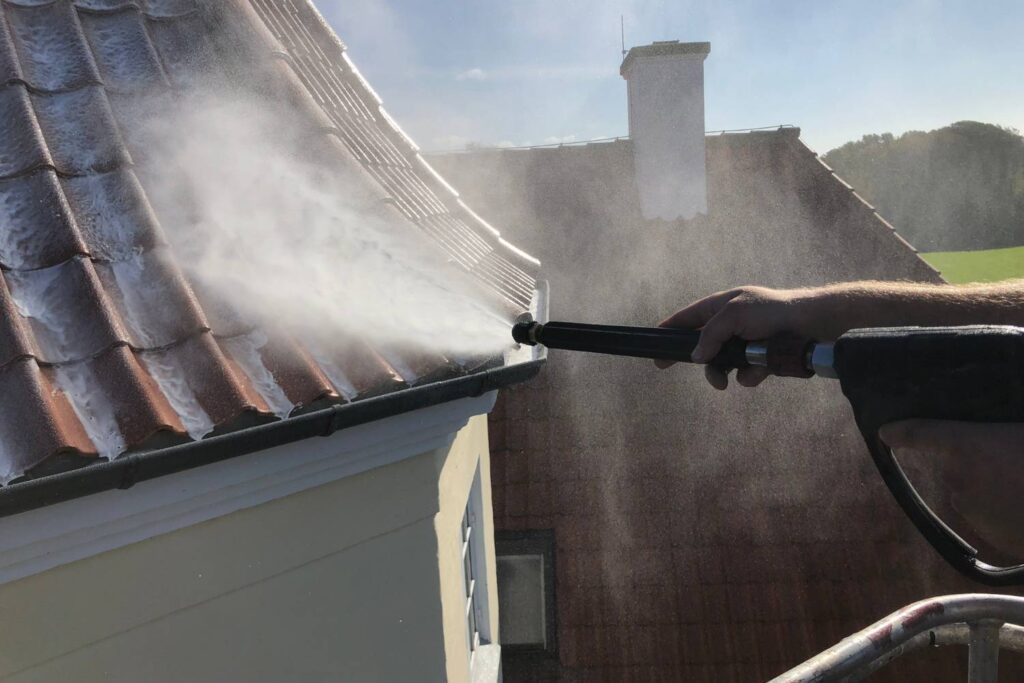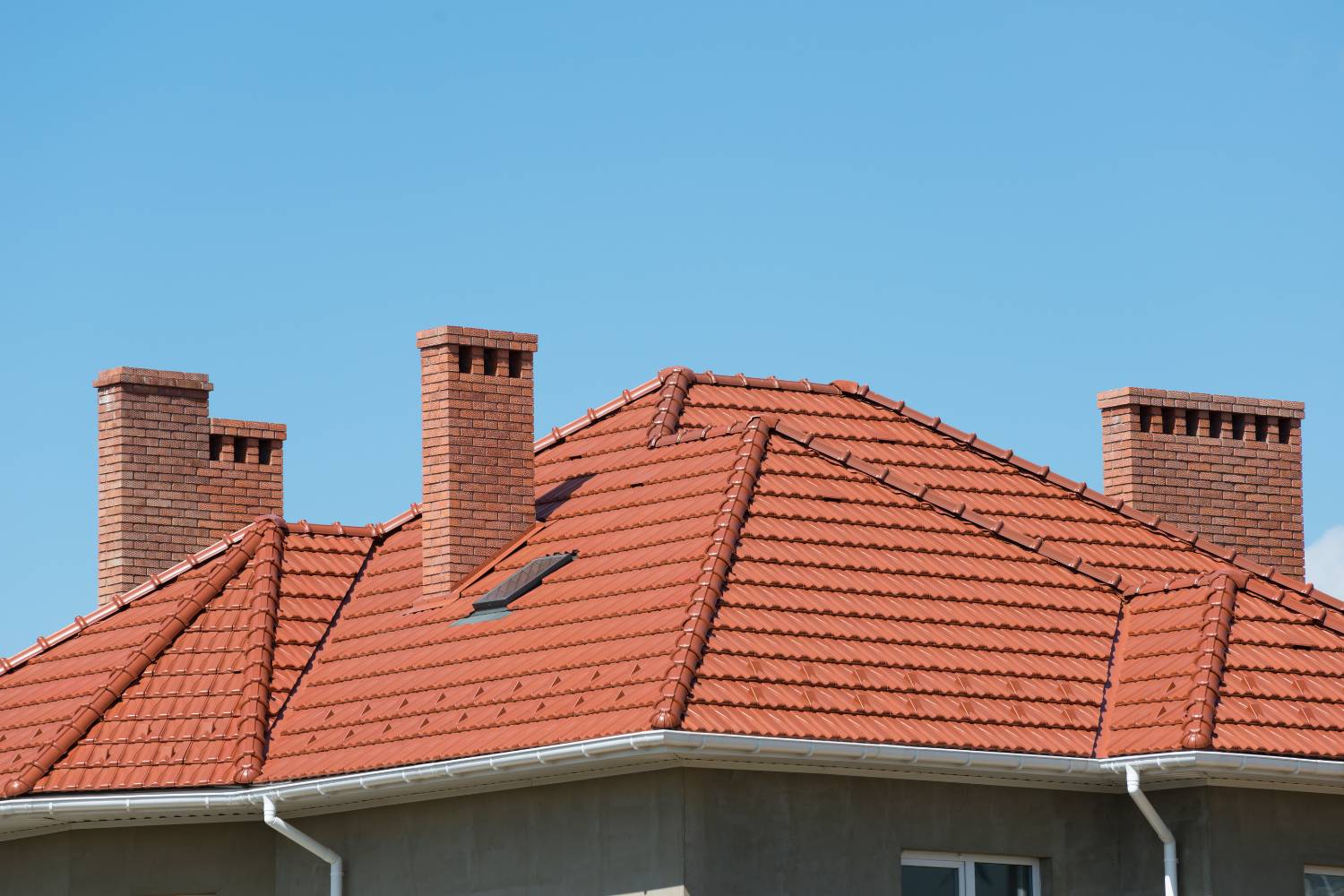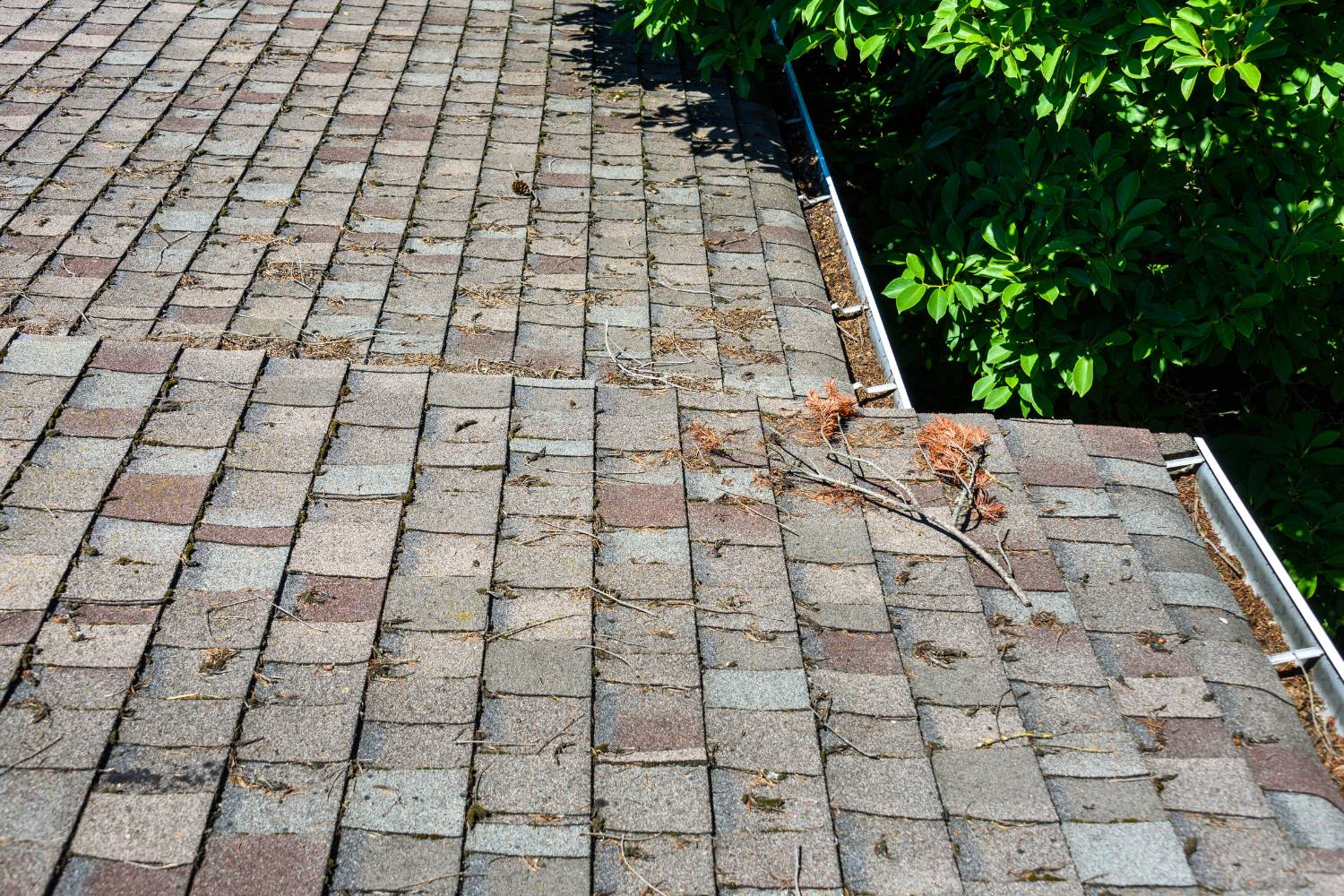Roof maintenance is a crucial yet often overlooked aspect of home upkeep. A well-maintained roof not only enhances the aesthetic appeal of your home but also ensures its structural integrity and longevity.
In this blog, we delve into the importance of preventing moss and algae growth on your roof. These seemingly harmless organisms can cause significant damage over time, leading to costly repairs and replacements.
Understanding the causes and preventive measures for moss and algae growth is essential for any homeowner. This guide covers everything from the types of growth you might encounter to effective cleaning methods and preventive strategies.
By taking proactive steps, you can keep your roof in top condition and avoid the pitfalls of neglect. Join us as we explore comprehensive tips and techniques to keep moss and algae at bay, ensuring your roof remains a strong and beautiful part of your home for years to come.
What Causes Moss And Algae To Grow On Roofs?
Moss and algae growth on roofs is a common issue that can cause significant damage if not addressed properly. Understanding the factors that contribute to this growth and the ways to prevent it is essential for maintaining the longevity and appearance of your roof.
Types Of Growth
Moss, algae, and lichens are the primary types of growth found on roofs. Moss is a bryophyte that develops from water-based plants and typically feels springy to the touch with short tendrils. While moss requires moisture to grow, it cannot survive if fully submerged in water.
Algae, on the other hand, is a thallophyte that grows in water and consists of single-celled plants in clusters, lacking roots, stems, or leaves. Lichens are a combination of algae and fungi, forming a symbiotic relationship that can often be mistaken for moss due to their varied appearances.
Causes Of Moss And Algae Growth
The growth of moss and algae on roofs is primarily driven by moisture and the presence of organic debris. Both moss and algae thrive in environments that provide ample moisture along with organic matter such as fallen leaves, twigs, and branches.
Shade plays a significant role as well; roofs that receive limited sunlight allow moisture to persist, creating ideal conditions for moss and algae to grow. Homes with substantial tree cover are particularly at risk since the shade from the trees prevents proper drying of the roofing system.
In addition, issues with water shedding, such as clogged gutters or debris accumulation, hinder effective drainage and lead to prolonged moisture retention on the roof. The age of the roof is another contributing factor; older roofs with deteriorating shingles are more prone to moss growth as they are less effective in shedding water.
How Moss Damages Roofs
Moss damages roofs in several ways. First, it strips away the protective oils from shingles, making them vulnerable to sun damage and erosion. Without these protective oils, shingles can warp and crack under the sun, significantly shortening their lifespan. Second, moss absorbs and retains water, spreading further with each rainfall and exacerbating the damage to the shingles.
The retained moisture ruins the shingles over time, eventually necessitating roof replacement if left unchecked. Lastly, moss can grow beneath the shingles, allowing moisture to infiltrate and cause wood rot within the home. This moisture infiltration leads to extensive and costly repairs.
How Can You Prevent Moss And Algae Growth On Your Roof?
Maintaining a clean roof is essential not only for the aesthetics of your home but also for its structural integrity. Moss and algae can cause significant damage if left unchecked. Here's a comprehensive guide on how to prevent these unwanted growths.
Ensure Proper Ventilation And Sunlight
Proper ventilation is crucial for maintaining a well-ventilated attic, which helps reduce moisture buildup and inhibits the growth of moss and algae. Ensuring that your attic is well-ventilated allows for the efficient exchange of air, reducing the chances of condensation that fosters these unwanted organisms.
Additionally, trimming overhanging branches can help maximise sunlight exposure to your roof. Increased sunlight penetration creates an environment less conducive to the growth of moss, algae, and other organisms.
Use Moss And Algae Resistant Materials
Modern shingles treated with substances that resist algae provide long-lasting protection against these growths. By choosing these innovative roofing materials, you can ensure prolonged protection and maintain the pristine appearance of your roof for years to come. Installing strips of zinc or copper at the roof’s peak can also be effective. When it rains, these metals release ions that flow down the roof, preventing moss and algae from establishing a foothold.
Regular Maintenance
Regularly clearing leaves and other debris from your roof is essential. Using a leaf blower, ensure that the debris is blown down the roof to prevent it from getting lodged under shingles, which can cause damage. It is also crucial to keep gutters clear to ensure proper water drainage. Clogged gutters can lead to water buildup, creating ideal conditions for moss and algae growth.
Professional Inspections And Cleanings
Hiring professional roofers for regular inspections can help identify and address early signs of moss and algae growth before they become significant issues. Professionals have the knowledge and tools to clean your roof without causing damage. Regular professional cleanings ensure that your roof remains free of harmful growths and maintains its structural integrity.
Preventive Measures Specific To Moss
Trimming tree branches that provide excessive shade and drop debris on your roof can help prevent moss growth. Moss thrives in moist, shaded areas, so reducing these conditions on your roof is crucial. When considering roofing materials, it is important to avoid methods that leave nail heads exposed, as this can lead to leaks. For new roofs or replacements, opting for shingles that include copper granules can provide additional protection against algae.
What Roof Cleaning Methods Are Effective Against Moss And Algae?
Roof maintenance is critical for prolonging the life of your roofing materials and preventing damage. Moss and algae growth can compromise your roof’s integrity, making effective cleaning methods essential. Here are some of the most efficient techniques for cleaning roofs and preventing moss and algae growth.
Pressure Washing
Pressure washing is a widely used method for cleaning roofs. It involves using a high-powered pressure washer to remove dirt, grime, moss, algae, and other debris. This method is particularly effective for cleaning roof tiles as it can easily remove moss growth that accumulates between tiles over time. However, pressure washing must be done carefully to prevent damage to the roof structure and materials.
High pressure can potentially break tiles and degrade the structural integrity of the roof. It is advisable to consult with a professional roof cleaning service to ensure that your roof remains in good condition. Pressure washing offers a quick and easy way to clean roof tiles without the need for harsh chemicals, but personal protective equipment (PPE) is essential to avoid injuries from the force of the washer.
Steam Cleaning
Steam cleaning is another powerful technique for cleaning roofs. Using hot water under high pressure, steam cleaning allows for the effective removal of natural debris such as moss, algae, and lichen from a variety of roofing materials. This method is less intrusive than pressure washing, as it relies on the heat of the steam to disintegrate the organic matter rather than the force of the water.
The increased temperature of the steam also provides a deeper, more effective cleaning while minimising the risk of damage to the roofing materials. However, steam cleaning can still cause damage if not done correctly, so it is best to enlist the help of a professional roof cleaning service.
Scrape And Treat
The scrape and treat method involves manually removing moss, algae, and other debris from the roof, followed by treating the area with a biocide solution to kill any remaining spores. Scraping can be done as a standalone service or in conjunction with steam cleaning or pressure washing to reduce mess.
Treating the roof with a biocide solution ensures that any growth that was not fully removed during scraping is killed, preventing future growth. This two-step process is labour-intensive but thoroughly eliminates moss and algae growth, resulting in a biologically clean roof surface.
Chemical Solutions
A common and effective method for cleaning algae and moss from a roof involves using a 50:50 mix of laundry-strength liquid chlorine bleach and water. This solution should be applied with a sprayer and allowed to dwell on the roof surface for 15 to 20 minutes before being rinsed thoroughly with low-pressure water. Proper precautions should be taken to protect landscaping and surrounding areas from the bleach solution. This method is effective for both algae and moss, although moss may require multiple treatments for complete removal.
Preventative Measures
To discourage moss and algae growth, several preventative measures can be taken. Trimming tree branches back to allow more sunlight to reach the roof and minimise debris accumulation creates an environment less inviting for such growth. Regularly clearing debris from the roof with a leaf blower or similar non-abrasive method as part of a maintenance program is essential.
Keeping gutters clean to promote proper water drainage is also crucial. Additionally, adding zinc or copper strips to the roof can prevent both algae and moss growth due to the toxic properties of these metals. However, adding these strips to an existing roof is not recommended as it may cause leaks or other damage.
Can Roof Coatings Help In Preventing Moss And Algae?
Maintaining the integrity and appearance of a roof is crucial for homeowners. Roof coatings have become a popular solution, offering a range of benefits that go beyond just enhancing the visual appeal. This blog explores how roof coatings can help in preventing moss and algae growth, thereby extending the lifespan of your roof.
Protection Against Moss And Algae
Advances in technology have led to the development of elastomeric roof coatings, which are flexible and allow the roof to "breathe" by expelling moisture. These coatings significantly reduce the risk of moss and algae establishing themselves on the roof. By preventing water penetration and frost damage, roof coatings inhibit the growth of moss, lichen, and algae, keeping the roof clean and well-maintained for years.
Increased Durability And Lifespan
Roof coatings provide a protective layer that extends the life of your roof. They increase the roof’s durability by preventing cracking and other damage caused by weather elements. This added protection helps maintain the roof's structural integrity, thereby delaying the need for costly replacements.
Enhanced Aesthetic Appeal
Roof coatings come in various colours, which can transform old and tired roof tiles to look as good as new. This not only improves the overall appearance of the house but also adds value to the property. A well-maintained roof can enhance curb appeal and potentially increase the resale value of a home.
Energy Efficiency
Roof coatings can reflect up to 85% of the sun’s heat, keeping the home cooler during summer months. This reduces the need for air conditioning, leading to lower energy consumption and utility bills. During winter, the added layer of insulation provided by roof coatings helps keep the home warmer, further contributing to energy efficiency.
Reduced Maintenance And Repairs
One of the significant benefits of roof coatings is the reduction in maintenance and repair needs. By protecting the roof from UV rays, rain, snow, and ice, roof coatings minimise wear and tear. This means fewer repairs are needed over time, which can result in significant cost savings for homeowners.
Different Types Of Roof Coatings
There are various types of roof coatings available, each offering specific benefits:
- Asphalt Roof Coatings: Made from a mixture of asphalt and rubber, these coatings are durable and provide excellent protection against the elements.
- Silicone Roof Coatings: Known for their extreme weather protection and resistance to algae and moss growth, making them ideal for homes in humid climates.
- Elastomeric Roof Coatings: These flexible coatings offer excellent protection against sun, wind, and rain, and are suitable for various roofing materials.
- Acrylic Roof Coatings: Provide protection against sun and wind and are resistant to algae and moss, perfect for hot and humid climates.
- Polyurea Roof Coatings: Offer superior weather protection and durability, also resistant to algae and moss growth, ideal for harsh climates.
Conclusion
Maintaining a moss and algae-free roof is crucial for preserving the beauty and longevity of your home. Understanding the causes and implementing preventive measures can significantly reduce the risk of these harmful growths.
From ensuring proper ventilation and sunlight to using resistant materials and conducting regular maintenance, there are various strategies to keep your roof in top condition. Additionally, professional inspections and cleanings can help identify and address issues before they become significant problems.
By following the tips and techniques outlined in this guide, you can protect your roof from damage, enhance its aesthetic appeal, and extend its lifespan. Whether you choose pressure washing, steam cleaning, or chemical solutions, effective roof care requires a combination of proactive measures and regular upkeep. Embracing these practices will ensure your roof remains a strong and beautiful asset to your home for years to come.
Frequently Asked Questions
Moss and algae thrive in damp, shaded environments. Roofs that receive little sunlight, have poor drainage, or are covered by overhanging trees are more susceptible to moss and algae growth. These organisms can latch onto shingles and other roofing materials, drawing moisture from the air and organic debris that accumulates on the roof.
To prevent moss and algae growth, keep your roof clean and dry. Regularly remove debris such as leaves and twigs that can trap moisture. Trim back overhanging branches to allow more sunlight to reach the roof and improve airflow. Installing zinc or copper strips along the roof ridge can also help, as rainwater washes down these metals and inhibits moss and algae growth.
The safest method for cleaning moss and algae off your roof is to use a soft-bristle brush or a low-pressure garden hose. Avoid using high-pressure washers, as they can damage roofing materials. For stubborn growth, apply a commercial moss and algae remover following the manufacturer's instructions. Always prioritise safety and consider hiring a professional if you’re unsure.
Long-term solutions include improving roof ventilation and ensuring proper drainage. Installing zinc or copper strips is an effective long-term measure. Additionally, using algae-resistant roofing materials can help prevent growth. Regular inspections and maintenance are crucial to catching any issues early and keeping your roof in good condition.
It’s recommended to inspect your roof at least twice a year, ideally in the spring and autumn. Look for signs of moss and algae growth, especially in shaded areas. Regular inspections allow you to address any issues before they become severe and ensure that your preventive measures are effective.


